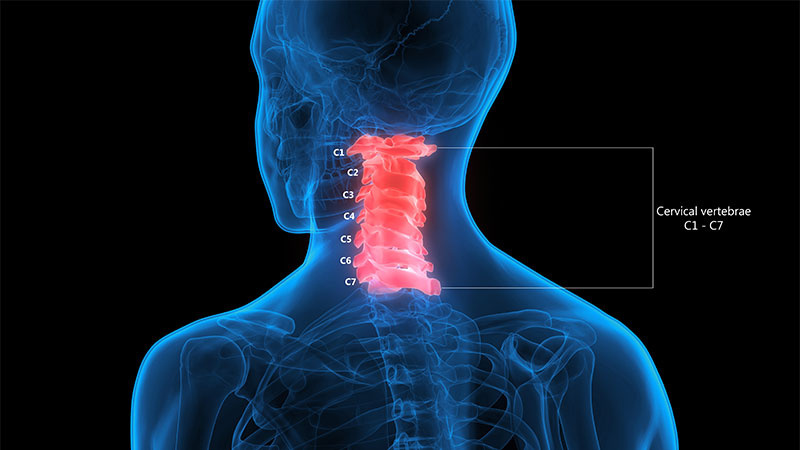Cervical spine injuries range in severity and are caused by trauma such as falls, car accidents, violence, or sports activities. The higher up the vertebral column the injury occurs, the closer it is to the brain and the greater the impact on sensation and bodily function, such as breathing. The region or location of the injury on the vertebrae is used to classify cervical fractures and dislocations (C1-C7).
When there is an abrupt impact or twisting of the spine during the initial moment of trauma, the bones of the cervical spine can break or the ligaments can rupture, resulting in injuries such as cervical fractures and dislocations.
Cervical Spine Injuries: What Are They?
Cervical sprains
Cervical fractures occur when the bones of the vertebrae structure in the neck break or crack. Patients with cervical fractures typically experience significant pain and stiffness in the neck, as well as pain in other areas caused by neurologic compression or irritation. A neck fracture can sometimes result in a complete spinal cord injury, leading to paralysis or even death, but in most cases, the patient can recover completely.
Dislocations of the cervix
Cervical dislocation occurs when trauma to the neck causes a misalignment of two or more adjoining vertebrae bones. The structure can become abnormally separated and misaligned, resulting in instability and neurological function damage.
Damage to the nerve roots
When the nerves in the cervical spine are pinched, compressed, or severed, nerve root damage occurs. Muscle weakness, sensitivity, or numbness are all common symptoms.
Intervertebral disc degeneration
Intervertebral disc damage occurs when trauma to the vertebrae structure causes a tear, rapture, or legion on the disc tissue. Intervertebral disc damage may cause problems with movement or bodily function. If not treated, the disc can degrade completely over time, leaving no space between the vertebrae, limiting function and increasing pain.
Cervical stenosis
Cervical stenosis occurs when trauma causes a narrowing of passageways, such as those in the nervous system. Stenosis can cause numbness, pain, tingling, and loss of sensation.
Neck sprains and strains
Cervical sprains or strains can occur when the neck muscles or tendons are overstretched during the initial trauma, resulting in conditions such as whiplash. After a few weeks of rest and limited mobility, the majority of patients recover. A more severe strain can take months to heal.
Cervical spine fractures and dislocations account for half of all spinal column injuries each year. Because of its mobility, the cervical spine is the most vulnerable to injury during times of trauma. Cervical spinal cord injuries are the most devastating, and they are frequently irreversible and permanent. Cervical spinal cord injuries can cause quadriplegia or tetraplegia, as well as muscle weakness in one or more extremities. As inflammation, dislocation, or improper alignment continue, nerve damage increases, so assessing a cervical spine injury immediately is critical to preventing progressive damage that may occur after the initial trauma.


